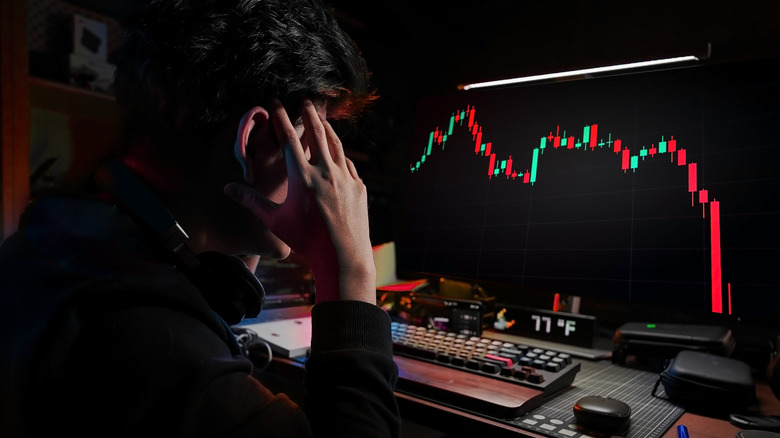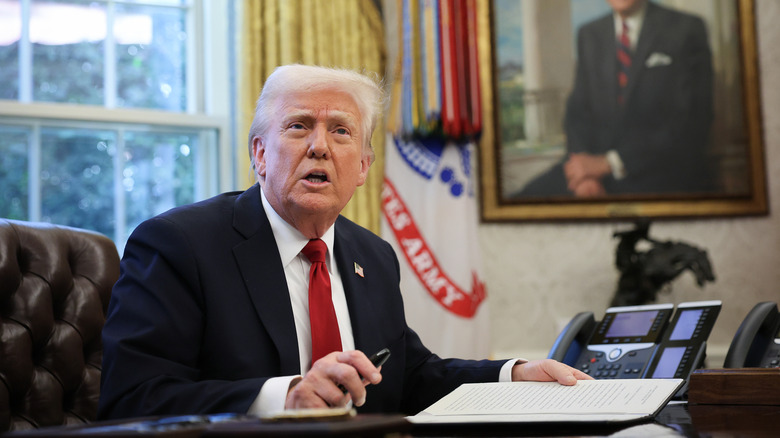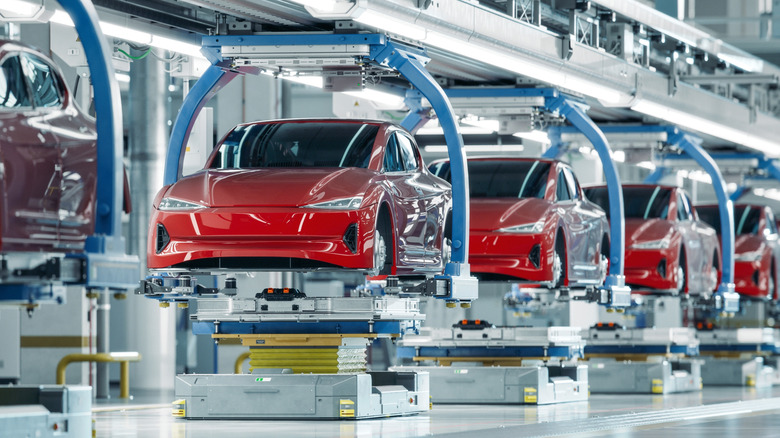US Recession Odds Just Went Up And The Numbers Aren't Pretty
April 2, 2025 has been dubbed "Liberation Day." That is, the day when President Trump's slew of proposed tariffs on imported goods will officially take effect. In Trump's vision for enacting these tariffs, taxing imported products will return at least some manufacturing back to the United States, making it less reliant on foreign-made goods. At the same time, the tariffs will represent extra income for the government, without any additional taxes.
While that all sounds wonderful in theory, many economists predict that foreign countries won't be willing to absorb any, let alone the entire, cost of these tariffs out-of-pocket. Instead, consumers could be on the hook for higher prices at the cash register to offset the additional expense of these tariffs. As a result, investment bank Goldman Sachs recently sounded the alarm to its clients that the odds of a recession happening within the next 12 months now stand at 35%. That's a sharp uptick from the bank's previous recessions odds of 20%.
What exactly is a recession?
At it's most basic, a recession is when a country experiences at least two consecutive quarters of inflation-adjusted gross domestic product (GPD) decline. As a quick refresher, GDP is the value of all goods and services that a country produces. However, the average consumer isn't likely fixated on the current health of U.S. GDP. Instead, consumers will notice an overall decline in economic activity that lasts for, at least, a few months, although recessions can persist for years. In more specific terms, this economic slump can lead to increased unemployment, diminished worker bargaining power, a declining stock market, and even weakness in the housing market due to financial institutions being less willing to lend money.
It's also worth mentioning that some economists are far more pessimistic than Goldman Sachs, with many placing the odds of a looming recession at more of a 50/50 coin flip. One highly regarded economist in particular, Mark Zandi from Moody's Analytics, split the difference with a call for a 40% chance of recession. That's up from his 15% prediction at the beginning of 2025 — when Trump's tariffs were still merely a blip on the radar. Zandi wrote in a recent post on X, "As long as the tariffs and DOGE cuts continue to mount, so too will the odds of recession."
How inflation could factor in
As if triggering a recession wasn't bad enough, many economists are also concerned that Trump's tariffs could also lead to higher inflation. For example, Goldman Sachs increased its year-end inflation target from 3.0% to 3.5%, a far cry from the Federal Reserve's targeted rate of just 2.0%. This combination of stagnant economic growth combined with high inflation is often dubbed stagflation, and the last time the U.S. experienced significant stagflation was during the 1970s. At the time, it was caused by an embargo on imported oil which subsequently led to rapidly rising fuel costs and high unemployment.
In the past, the Federal Reserve has been able to resuscitate sluggish economies by slashing interest rates – like during the 2007-2009 Great Recession and the COVID-19 pandemic. However, the Fed typically raises interest rates when fighting inflation, as it has done since 2022. Therefore, stagflation presents the U.S. central bank with something of a conundrum when it comes to how to handle its interest rate policy. Stagflation would create a tug of war between declining economic activity and rising consumer prices from tariffs.


